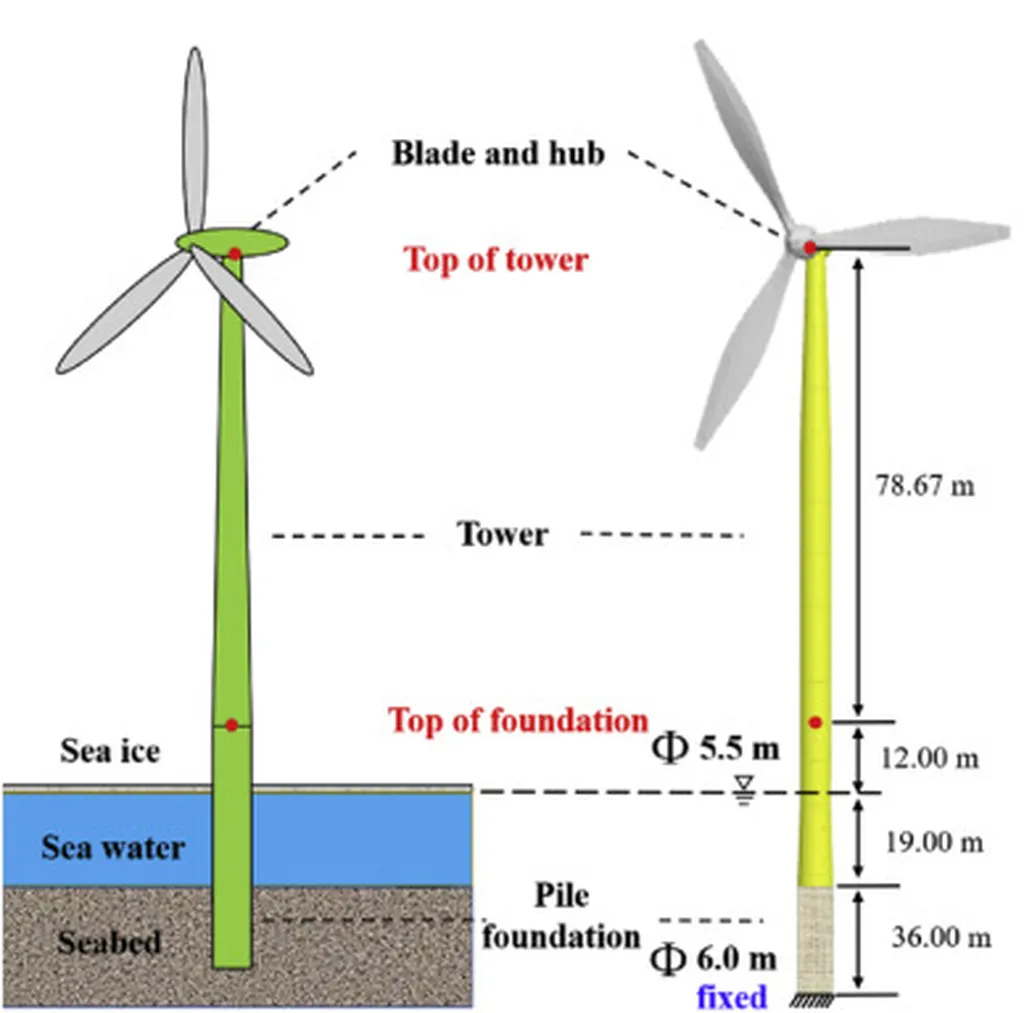In the brisk, icy waters where offshore wind turbines are increasingly being deployed, a significant challenge looms: accurately identifying ice loads to ensure these structures’ safety and longevity. Jianing Zhang, a researcher from Dalian Maritime University’s School of Naval Architecture and Ocean Engineering, has tackled this issue head-on with a novel approach that combines machine learning and genetic algorithms. The findings, published in the journal ‘AIP Advances’ (which translates to ‘Advances in Physical Sciences’), offer a promising solution for the maritime and renewable energy sectors.
Offshore wind turbines (OWTs) in cold regions face substantial ice loads, which can compromise their structural integrity. While full-scale measurements are the gold standard for obtaining ice load data, they’re often impractical due to high costs, harsh environments, and the complexity of ice-structure interactions. Zhang’s study proposes a hybrid machine learning method that uses a radial basis function neural network (RBFNN) combined with a genetic algorithm (GA) to identify ice loads based on structural dimensions and environmental parameters.
So, what does this mean for maritime professionals? In simple terms, Zhang’s method provides a more efficient and scalable way to predict ice loads on OWTs. By using high-fidelity data from full-scale measurements, physical model tests, and numerical simulations, the model can accurately predict ice loads, reducing the need for costly and complex full-scale measurements.
The key input features influencing the model’s prediction performance are pile diameter, ice thickness, and ice drift velocity. Zhang’s team found that optimizing the RBFNN model using a GA significantly improved both accuracy and generalization, reducing the average error by about 28% compared to the traditional RBFNN model.
“This method provides an efficient and scalable solution for the inverse identification of ice loads on OWTs in cold regions,” Zhang explained. The commercial implications are substantial. By improving the accuracy of ice load predictions, this method can enhance the design and maintenance of OWTs, reducing downtime and increasing their service life. This is particularly important as the offshore wind industry continues to expand into colder regions, where ice loads pose a significant challenge.
Moreover, the method’s scalability means it can be applied to a wide range of OWT designs and environmental conditions, making it a valuable tool for maritime engineers and offshore wind farm developers. As Zhang noted, “The method addresses the accuracy and stability limitations of traditional inversion techniques,” offering a more reliable way to ensure the structural safety of OWTs in icy waters.
In the competitive world of offshore wind, every advantage counts. Zhang’s research provides a significant step forward, offering a practical, cost-effective solution to a complex problem. As the maritime and renewable energy sectors continue to evolve, such innovations will be crucial in driving progress and ensuring the safe, efficient operation of offshore wind turbines in challenging environments.

